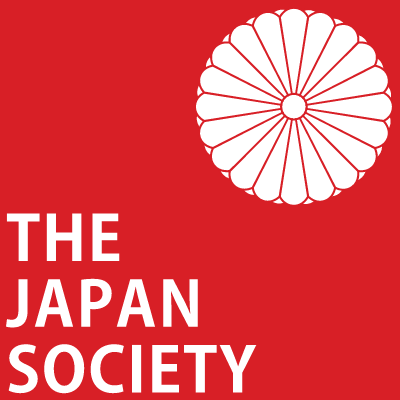The Japan Project

The Japan Project is a multi-lesson unit designed to give pupils across Key Stages 1-3 a cross-curricular introduction to Japan.
The unit includes lessons on Japan’s location, physical geography, climate, and wildlife and covers aspects of the Science, Art & Design, Computing and Geography curricula. It is intended to be taught whole, however individual lessons may also be used as standalone resources and can be used in any order after the first lesson.
Download all lesson resources (Zip folder 75 MB), or see below for more detailed information on the lesson content.
Lesson 1 – Japan's Location
Key Stage: upper KS1 - KS2
The first lesson of the unit gives students a chance to discuss what they already know about Japan and think about what they would like to learn over the coming weeks. As well as learning about the location of Japan in the world, students will find out about each of Japan’s main islands.
Learning Objectives
- Locate Japan on a world map.
- Locate and name Japan’s capital city and four main islands.
Resources
- L1 - Location Lesson Plan - PDF (688KB)
- L1 - Location Presentation - PPTX (3.9 MB)
- L1 - Task 1 Worksheet [KWL] - PDF (91 KB)
- L1 - Task 2 Worksheet [Location] - PDF (208 KB)
Lesson 2 – Volcanoes (Physical Geography)
Key Stage: KS2
Students will learn that Japan is home to many active volcanoes, including Mount Fuji and Sakurajima, and how volcanoes are formed. During the main task students will begin to create their own volcano and, when complete, will conduct a science experiment - mixing acid (vinegar) with an alkali (bicarbonate of soda) to create an eruption!
Learning Objectives
- Explore the physical geography of Japan.
- Know about and be able to name the Earth’s layers.
- Explore how volcanoes are formed and why they erupt.
Resources
- L2 - Volcanoes Lesson Plan - PDF (945 KB)
- L2 - Volcanoes Presentation - PPTX (5.6 MB)
- L2 - Task 1 [True or False] Worksheet - PDF (142 KB)
Lesson 3 – Weather & Climate
Key Stage: upper KS2
In this lesson, students will understand the difference between climate and weather. They will information about the weather in a Japanese city to create and present a weather report and will use weather data to evaluate the best time to visit Japan.
Learning Objectives
- Describe the climate of Japan.
- Investigate climatic variations across the country and throughout the year.
- Analyse, evaluate and present weather data from Japan using Excel.
- Evaluate when would be the best time to visit Japan.
Resources
- L3 - Climate Lesson Plan - PDF (871 KB)
- L3 - Climate Presentation - PPTX (2.5 MB)
- L3 - Task 1 Weather Forcast Worksheet - PDF (1.3 MB)
- L3 - Task 2 Weather Data in Excel - XLSX (27 KB)
- L3 - Task 2 Weather Data - PDF (182 KB)
- L3 - Task 2 Weather Data Worksheet - PDF (273 KB)
- L3 - [ALTERNATIVE] Task 2 Data and Worksheet - PDF (98 KB)
Lesson 4 - Japanimals!
Key Stage: KS2
This lesson introduces students to the diversity of wildlife in Japan and their individual habitats. Using fact sheets and other information students will research one of the animals and annotate a map of Japan, showing where it can be found.
Learning Objectives
- Research information about animals found in Japan.
- Present findings back to the class.
Resources
- L4 - Japanimals Lesson Plan - PDF (846 KB)
- L4 - Japanimals Presentation - PPTX (3.9 MB)
- L4 - Japanimals Fact Sheets - PDF (3.5 MB)
- L4 - Japanimals Worksheet - PDF (4.5 MB)
Lesson 5 - Exploring Hokusai
Key Stage: upper KS2 - lower KS3
Introduce traditional ukiyo-e woodblock prints to students through Hokusai’s print series the Thirty-six views of Mount Fuji. Students will look at examples and learn about the printing process before making their own work inspired by Hokusai.
Learning Objectives
- To explore the art of Katsushika Hokusai.
- To create an artwork inspired by Hokusai’s techniques.
Resources
- L5 - Exploring Hokusai Lesson Plan - PDF (698 KB)
- L5 - Exploring Hokusai Presentation - PPT (34.7 MB)
- L5 - Activity Worksheet - PDF (122 KB)
- L5 - Activity Worksheet - PDF (403 KB)
- L5 - [ALTERNATIVE] Activity Worksheet - PDF (425 KB)
Lesson 6 - The History of Samurai
Key Stage: upper KS2 - lower KS3
In this lesson, pupils will get the chance to learn all about an interesting group of people throughout Japanese history – samurai! They will learn about the various roles that samurai played in society, as well as uncover some of the many myths that surround them through a fun myth vs reality activity.
Learning Objectives
- Understand the significance of samurai in Japanese history.
- Evaluate statements about samurai and consider whether they are true or false.
Resources
- L6 - Background Notes for Teachers - PDF (423 KB)
- L6 - The History of Samurai Lesson Plan - PDF (439 KB)
- L6 - The History of Samurai Presentation - PPTX (10.6 MB)
- L6 - Myth vs Reality Activity Cards - PDF (277 KB)
Additional Resources
- Video: How to Make an Origami Kabuto - Samurai Helmet
- Activity Sheet: Design Your Own Samurai Helmet - PDF (335 KB)
Additional Resources

